Abstract
Solid tumours present numerous obstacles for efficient systemic delivery of therapeutic agents. This goal has to face specific problems related to the nature of each targeting element, but also the physical barriers posed by tumours, such as heterogeneous blood supply and elevated interstitial pressure. These barriers impair the delivery to tumours of antibodies or viral particles. Immune cells are supposed to be endowed with the ability to target tumours, but in general, tumour cells themselves provide poor targets for immunological responses. A key challenge of tumour gene therapy (cell carrier- and / or viral vector-mediated) is to control the site at which genes are expressed by instructing cells or virus or to distinguish between target and non-target tissue. Thus, antibody-directed targeting of virus or cells could potentially improve both the safety and the efficacy of therapeutic gene delivery to tumours. Furthermore, virus production can rely on carrier cells under the transcriptional control of a factor activated after specific triggering of a tumour-specific receptor. Given that any of these anti-tumour strategies by themselves have fulfilled their therapeutic potential, we propose here their combination for developing more effective anti-cancer therapies.
Keywords: cancer, gene therapy, antibody engineering, virus targeting
Current Gene Therapy
Title: Antibody Engineering, Virus Retargeting and Cellular Immunotherapy: One Ring to Rule Them All?
Volume: 5 Issue: 1
Author(s): Laura Sanz, Jian Qiao, Richard G. Vile and Luis Álvarez-Vallina
Affiliation:
Keywords: cancer, gene therapy, antibody engineering, virus targeting
Abstract: Solid tumours present numerous obstacles for efficient systemic delivery of therapeutic agents. This goal has to face specific problems related to the nature of each targeting element, but also the physical barriers posed by tumours, such as heterogeneous blood supply and elevated interstitial pressure. These barriers impair the delivery to tumours of antibodies or viral particles. Immune cells are supposed to be endowed with the ability to target tumours, but in general, tumour cells themselves provide poor targets for immunological responses. A key challenge of tumour gene therapy (cell carrier- and / or viral vector-mediated) is to control the site at which genes are expressed by instructing cells or virus or to distinguish between target and non-target tissue. Thus, antibody-directed targeting of virus or cells could potentially improve both the safety and the efficacy of therapeutic gene delivery to tumours. Furthermore, virus production can rely on carrier cells under the transcriptional control of a factor activated after specific triggering of a tumour-specific receptor. Given that any of these anti-tumour strategies by themselves have fulfilled their therapeutic potential, we propose here their combination for developing more effective anti-cancer therapies.
Export Options
About this article
Cite this article as:
Sanz Laura, Qiao Jian, Vile G. Richard and Álvarez-Vallina Luis, Antibody Engineering, Virus Retargeting and Cellular Immunotherapy: One Ring to Rule Them All?, Current Gene Therapy 2005; 5 (1) . https://dx.doi.org/10.2174/1566523052997479
| DOI https://dx.doi.org/10.2174/1566523052997479 |
Print ISSN 1566-5232 |
| Publisher Name Bentham Science Publisher |
Online ISSN 1875-5631 |
Call for Papers in Thematic Issues
Programmed Cell Death Genes in Oncology: Pioneering Therapeutic and Diagnostic Frontiers (BMS-CGT-2024-HT-45)
Programmed Cell Death (PCD) is recognized as a pivotal biological mechanism with far-reaching effects in the realm of cancer therapy. This complex process encompasses a variety of cell death modalities, including apoptosis, autophagic cell death, pyroptosis, and ferroptosis, each of which contributes to the intricate landscape of cancer development and ...read more
Related Journals
 18
18
- Author Guidelines
- Bentham Author Support Services (BASS)
- Graphical Abstracts
- Fabricating and Stating False Information
- Research Misconduct
- Post Publication Discussions and Corrections
- Publishing Ethics and Rectitude
- Increase Visibility of Your Article
- Archiving Policies
- Peer Review Workflow
- Order Your Article Before Print
- Promote Your Article
- Manuscript Transfer Facility
- Editorial Policies
- Allegations from Whistleblowers
- Announcements
Related Articles
-
Engineered Peptides for Applications in Cancer-Targeted Drug Delivery and Tumor Detection
Mini-Reviews in Medicinal Chemistry Modulation of TRAIL-Induced Apoptosis by HDAC Inhibitors
Current Cancer Drug Targets Targeted Therapies in Solid Tumours: Pinpointing the Tumours Achilles Heel
Current Pharmaceutical Design Conventional and Gene Therapy Strategies for the Treatment of Brain Tumors
Current Medicinal Chemistry Thiazolidinedione: A Privileged Scaffold for the Development of Anticancer Agents
Current Topics in Medicinal Chemistry New Insights into Pre-, Intra- and Post-Operative Brain Mapping in Low- Grade Glioma Surgery: Towards a Longitudinal Study of Cerebral Plasticity
Current Medical Imaging Neuroprotective Properties of Peroxisome Proliferator-Activated Receptor Alpha (PPARα) and its Lipid Ligands
Current Medicinal Chemistry Potassium Channels are a New Target Field in Anticancer Drug Design
Recent Patents on Anti-Cancer Drug Discovery Elevated Levels of Bilirubin and Long-Term Exposure Impair Human Brain Microvascular Endothelial Cell Integrity
Current Neurovascular Research Taming Oncogenic Signaling at Protein Interfaces: Challenges and Opportunities
Current Topics in Medicinal Chemistry The Effects of Weightlessness on the Human Organism and Mammalian Cells
Current Molecular Medicine Polo-Like Kinase 1 as a Potential Therapeutic Target for Osteosarcoma
Current Pharmaceutical Design Regulating TRAIL Receptor-Induced Cell Death at the Membrane: A Deadly Discussion
Recent Patents on Anti-Cancer Drug Discovery Phenanthrene Dimers: Promising Source of Biologically Active Molecules
Current Topics in Medicinal Chemistry Single-Photon Emission Computed Tomography Tracers for Predicting and Monitoring Cancer Therapy
Current Pharmaceutical Biotechnology Isomers of 4-[<sup>18</sup>F]fluoro-proline: Radiosynthesis, Biological Evaluation and Results in Humans Using PET
Current Radiopharmaceuticals ABC Transporters in the CNS – An Inventory
Current Pharmaceutical Biotechnology Dynamic Contrast Enhanced Magnetic Resonance Imaging in Oncology:Theory, Data Acquisition,Analysis, and Examples
Current Medical Imaging Membrane Transporters in Physiological Barriers of Pharmacological Importance
Current Pharmaceutical Design Protein Secretome Analysis of Evolving and Responding Tumor Ecosystems
Current Proteomics












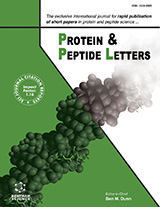
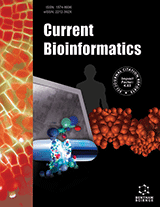
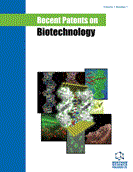
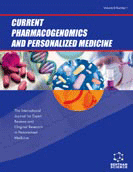
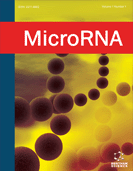
.jpeg)








